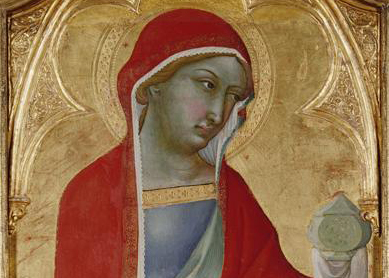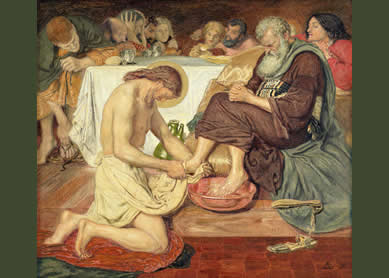In The Last Temptation of Christ (1988), Martin Scorsese tells a controversial story of a Jesus (played by Willem Dafoe) who struggles to follow his destiny: is he fully God or fully human? His companion Mary Magdalene (played by Barbara Hershey) wants him to “be a real man.”
Scorsese creates a character out of several unrelated biblical women, relying more on the novel by Kazantzakis than on historical research about Mary Magdalene. For example, he draws on the Samaritan woman who has multiple husbands (John 4) and presents Mary as prostitute who is naked, unveiled, and covered with tattoos, having sex with a series of men while others, including Jesus, watch; she has become a prostitute because Jesus refused to marry her. Scorsese also borrows the story of the unnamed woman caught in adultery (John 8:3-11). In The Last Temptation, Jesus interrupts the stoning of Mary Magdalene, who is accused of breaking the law by having sex with Romans on the sabbath. Scorsese also pulls in the woman who anoints Jesus (unnamed but “remembered,” Matt 26:6-13, Mark 14:3-9; Mary of Bethany, John 12:1-8; a sinner of the city, Luke 7:36-50). Instead of the woman anointing Jesus, however, Jesus wipes the feet of Mary Magdalene.
For the temptation scene (see Luke 4:1-14), Scorsese ignores the gospel details and uses the Garden of Eden motif instead, casting Mary in both the role of Eve and the serpent (Genesis 3:1-7). As Jesus waits in the desert, a serpent with Mary’s voice comes to him because, like the first man, Adam, he was lonely. “Just nod your head,” says the voice, “and we will be in my bed together.” At the cross, Satan—in disguise as a guardian angel—offers Jesus one “last temptation” to come down from the cross and live like a normal human. In the following dream sequence, Jesus and Mary Magdalene marry; she becomes pregnant but unfortunately dies; Jesus marries Mary and Martha, has several children, and grows to old age. On his deathbed, he sees that his angel is really Satan and returns to the cross where he “accomplishes” the task of the divine Messiah. In order to make this last temptation believable, Scorsese exaggerates the seductive characteristics of Mary Magdalene. Alas, she no longer resembles the biblical woman.
According to the gospels, Mary Magdalene was one of the women who had traveled with Jesus and the disciples and provided for them (Luke 8:2; Mark 15:40-41); she also sees Jesus being crucified (Matt 27:55-56; Luke 23:49; John 19:25). These two details are the only biblically accurate moves that Scorsese makes. He does not recount that Jesus cast seven demons out of her (Luke 8:2; cf. Mark 16:9), nor does he present any resurrection stories in which Mary Magdalene shines (e.g., Matt 27:61; Mark 15:47; John 20:1-18). Scorsese literally strips her of the role as “apostle of the apostles” (so called by later Christian texts) and leaves her the naked temptress, for, according to the film’s Satan-angel, “There is only one woman, with many faces.”
Bibliography
- Baugh, Lloyd. Imagining the Divine: Jesus and Christ-Figures in Film. Kansas City, Mo.: Sheed and Ward, 1997. Pp. 51-71.
- Staley, Jeffrey L., and Richard Walsh. Jesus, the Gospels, and Cinematic Imagination: A Handbook to Jesus on DVD. Louisville, Ky.: Westminster John Knox, 2007.
- Kennedy, Tammi. “(Re)Presenting Mary Magdalene: A Feminist Reading of The Last Temptation of Christ.“ Journal of Religion and Popular Culture 9 (2005).
- Schaberg, Jane. The Resurrection of Mary Magdalene: Legends, Apocrypha, and the Christian Testament. New York: Continuum, 2004.
- Stern, Richard C., Clayton N. Jefford, and Guerric Debona. Savior on the Silver Screen. New York: Paulist, 1999. Pp. 265-95.





